Delta Aquariids Kick Off Summer Meteor Showers
The meteors are coming! Three annual meteor showers are already active and guaranteed to spark up your summer nights.
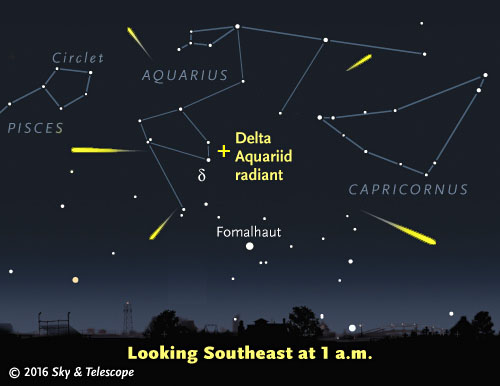
The Delta Aquariid meteor shower peaks in late July. All the meteors appear to streak away from a spot called the radiant,which lies about 10° above the bright star Fomalhaut and near the fainter star Delta (δ) Aquarii — hence the shower's name.
Sky & Telescope diagram
Sky & Telescope diagram
Open the gate. Here they come! It's time for the annual trifecta of late July-early August meteor showers beginning with the Delta Aquariids which peak the night of July 28–29. The last meteor shower of note occurred in early May when the Eta Aquariids sprinkled a modest few meteors across the dawn sky. Yes, it's been a long time.
The Delta Aquariid meteor shower takes its name from Delta Aquarii, a 3rd-magnitude star in the constellation Aquarius, the Water Carrier. Shower meteors fan out across the sky, but all appear to streak away from a point in central Aquarius called the radiant.
A sure way to know if you've spotted a Delta Aquariid is to trace its path backwards. If it returns you to the vicinity of Delta Aquarii, you've got a keeper.
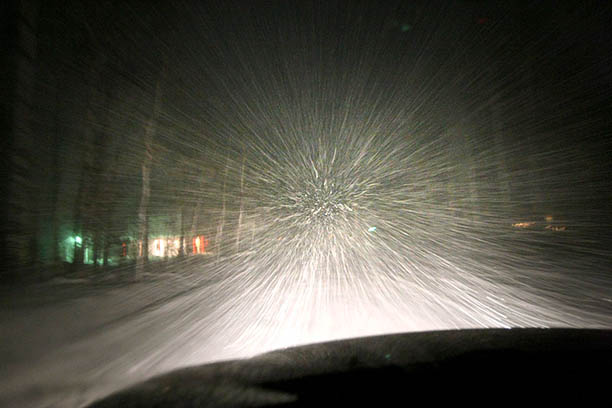
Car headlights reveal a dazzling "snow radiant", a perspective effect much the way meteors appear to radiate from a point in the sky during a meteor shower. In the case of snow, the car is moving into the storm. With meteors, Earth is zipping along its orbit while traveling through debris deposited by comets and sometimes asteroids.
Bob King
Bob King
The radiant is a perspective effect caused by meteors arriving from the same direction at similar speeds. If you've ever driven through a heavy rain or snowstorm at night, you've probably noticed that precipitation caught in your headlight beams appears to "radiate" from a point in the distance. The illusion is identical to the that of railroad tracks converging in the distance. Still, despite appearances, we know the tracks remain parallel just the way meteors do when they spear through the atmosphere.
Some meteor showers have sharp peaks, others are "soft", with broadly spread-out activity. The Delta Aquariids typically fire off 15 to 20 meteors per hour before dawn begins, when Aquarius is highest in the sky — its broad peak is centered on Friday morning. Since most shower members are rather faint, plan to catch the show from a reasonably dark sky.
What's nice about these more diffuse showers is that they keep putting out meteors a week or morebefore and after maximum. If the weather doesn't cooperate one night, you can look the next. Or the next.

A bright meteor flares during its plunge through the atmosphere.
Jimmy Westlake
Jimmy Westlake
You can start watching as "early" as midnight when Aquarius pokes its head up in the southeastern sky, but 2 a.m. local time might be better since that's when the radiant crosses the meridian and stands highest in the south at 3:15 a.m.. Dawn begins around 4 a.m. for observers at mid-northern latitudes.
Because the radiant is relatively low in the southern sky, skywatchers in tropical and southern latitudes will see more meteors than those farther north. Why? Meteors that flash a significant distance south of the radiant get cut off by the southern horizon.
Whatever time you choose to begin your vigil, find a location with a minimum of light pollution and set up a comfy reclining lawn chair facing east or south for the best view. Remember to bring a blanket to ward off the damp chill of a humid night. Coffee and tea are welcome and even a little music for atmosphere. Or you can soak in the soft stridulations of crickets and katydids.
The Moon hugely affects how many meteors you might see. Lucky for meteor lovers, it will be a 23% waning crescent considerably farther east in Taurus on Friday morning and should make only a small dent in meteor counts.
Aldebaran Occultation
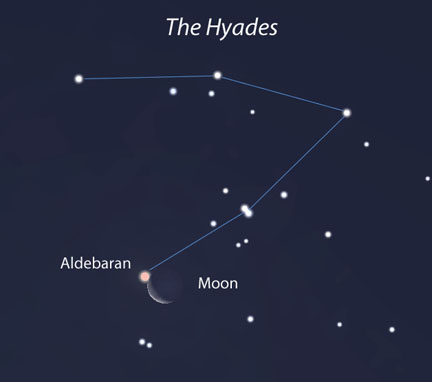
This map shows the crescent Moon gliding just south of Aldebaran as viewed from the central U.S. around 5 a.m. local time on July 29th.
Source: Stellarium
Source: Stellarium
But hold on — the Moon has it's own agenda. That very same morning, it will either just miss or occult the bright star Aldebaran shortly after 10:00 UT (5 a.m. CDT).
If you live south of a linethat crosses from Toledo, Ohio, through St. Louis, Missouri; Tulsa, Oklahoma; and El Paso, Texas, the Moon will cover the star. North of the line, it will glide just beneath it. Fortunate observers living within a half-mile either side of the line will witness a spectacular grazing occultation as Aldebaran repeatedly disappears and reappears behind the Moon's north polar peaks. Rarely has there been a better incentive to get up early for a meteor shower! Check here for full details.
The Origin of the Delta Aquariids
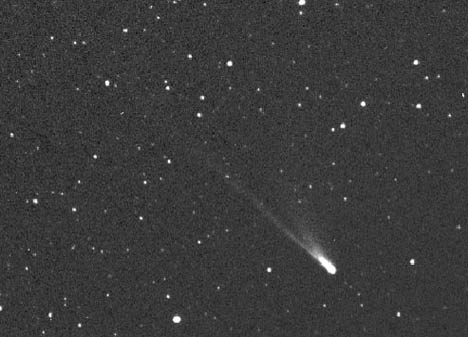
Comet 96P/Machholz photographed by the STEREO-A spacecraft. It's the possible parent comet of the annual Delta Aquariid meteor shower.
NASA
NASA
Each Delta Aquariid that flashes into view represents a crumb of debris sloughed off by comet96P/Machholzdiscovered in 1986 by American amateur astronomer Don Machholz. Solar heating vaporizes ice and loosens dust and small rocks from the comet. Some of the material falls back and coats the surface, and some gets pushed away by sunlight to form a trail of debris in the comet's wake. Every July, Earth sprints through 96P's trail; as the material strikes the atmosphere at 93,000 miles per hour (42 km/sec) and vaporizes, we get treated to glittery streaks of light.
The Capricornids
The Alpha Capricornids, which originate from Comet 169P/NEAT, are active at the same time as the Delta Aquariids and radiate from northwestern Capricornus. They stand out for being unusually slow-moving and often bright. You may see five of these per hour in the last week of July under ideal conditions radiating from the northwestern corner of Capricornus. But in the far future, this shower should become intense!
Meteor-stream calculators Peter Jenniskens and Jérémie Vaubaillon find that only the outer fringe of the stream currently crosses Earth’s orbit, and that the stream should have a rich inner core. This core should start intersecting Earth’s path in the 24th century. They predict that the Alpha Capricornids will be a major sky event every year from about 2200 to 2400 A.D., “stronger than any current shower,” according to S&T Senior Editor Alan MacRobert.
Perseid Meteor Shower Completes the Trifecta
Earlier I mentioned a trifecta of meteor showers. You can probably guess the third offering — thePerseids! Although the shower peaks on the night of August 12-13 with numbers in the neighborhood of 100 per hour, it's been active since mid-July, so don't be surprised if an outing over the next few nights nets a few Perseids, too.

The radiant of the Perseid meteor shower is high in the sky by 11 p.m. for observers at mid-northern latitudes. Although the Moon will interfere early on August 12–13, it sets around 1:30 a.m. leaving dark skies till dawn.
Sky & Telescope diagram
Sky & Telescope diagram
On the night the shower peaks, the Moon will be two days past first quarter in Ophiuchus and compromise the view a bit until it sets around 1:30 a.m. From then till dawn, we're likely to see the shower at its best.
Perseids originate from 109P/Swift-Tuttle and slash the sky with their swiftness. Fireballs as well as meteors leaving persistent, smoke-like trains are common.
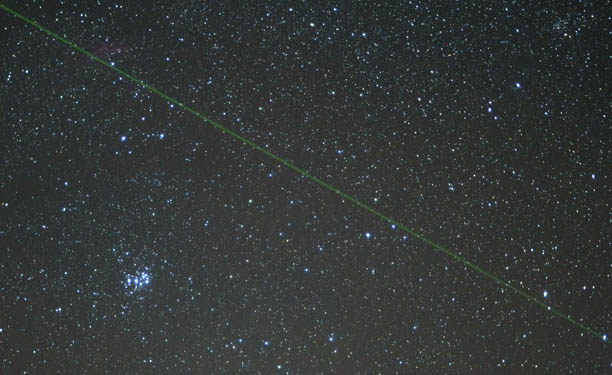
My camera captured only a short portion of a Leonid earthgrazer's flight across more than half the sky in November 2009. The radiant was still below the horizon at the time. The Pleiades star cluster is seen at lower left.
Bob King
Bob King
With all three showers, keep an eye out for earthgrazers, meteoroids that arrive at Earth at a very low angle. Instead of following a more typical, steeply-slanted path downward, they skim the upper air, often taking many seconds to finally fizzle out. Earthgrazers are more common when a shower’s radiant is either just below or a short distance above the horizon.
Let the fireworks begin!
No comments:
Post a Comment